January
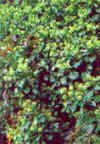 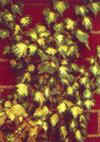 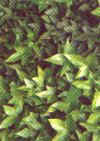 |
Hedera (Ivy).
Helix varieties are a good choice for the wildlife garden because they attract a large
range of insects. The leaves give shelter to overwintering butterflies and food for
emerging caterpillars. The plant provides nesting sites for wrens, sparrows and
blackbirds. The berries are eaten by resident birds and winter visitors. Autumn flowers
supply nectar for hoverflies, holly blue and tortoiseshell butterflies.
|
February
  |
Viburnum
Winter flowering varieties attract insects at this time of year when other flowering
shrubs are few and far between. Summer flowering varieties attract hoverflies and their
attractive berries provide a good food source for birds.
|
March
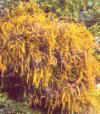 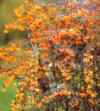 |
Berberis
(Barberry).
A valuable wildlife plant with stunning yellow flowers in spring. The mass of berries last
well into winter and provide food for resident and visiting birds. The spiny leaves give
good protection for nesting.
|
April
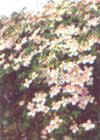 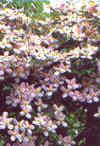 |
Clematis.
Montana types soon produce a dense tangle of stems for nesting birds. 'Elizabeth' and
'Odorata' are excellent scented varieties. Macropetula and tangutica types develop
attractive, fluffy seedheads which are popular with birds.
|
May
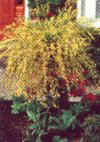 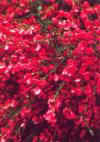 |
Cytisus (Broom).
A useful wildlife plant with colourful long lasting spring flowers which are excellent
pollen providers. |
June
  |
Lavendula (Lavender).
Evergreen summer flowering shrub with grey green aromatic foliage. The flowers are
particularly attractive to meadow browns, late broods of whites and bees. Flowers going to
seed are a favourite of goldfinches. |
July
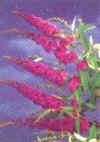 |
Buddleia.
Shrubs grown for their beautiful fragrant summer flowers, particularly attractive to red
admirals, brimstones, commas, tortoiseshells, whites and peacocks. |
August
 |
Lonicera (Honeysuckle).
Many varieties are useful for their fragrance, nectar and berries particularly
periclymenun 'Belgica' and 'Serotina'. Fragrantissima and standishii are winter flowering
varieties. The fragrant flowers attract hawkmoths and bees. The stems provide popular
nesting sites and the bark is taken by birds for nest building. Autumn berries are eaten
by birds. |
September
 |
Sedum.
Spectabile varieties have lovely pink, crimson or purple flowers in autumn. Most insects
flock to the flowers in search of nectar. Later, the seedheads will be flocked by
goldfinches. Earlier in the year, the bracts around the stem form a water reservoir which
attracts insects and small birds. |
October
 |
Chaenomeles (Flowering quince).
Autumn fruiting quinces are popular after fruit-fall by ground feeding birds. The red,
pink or white spring flowers attract bees and butterflies. |
November
   |
Pyracantha (Firethorn).
Evergreen summer flowering shrubs grown for their foliage, flowers and fruits. Clusters of
small white flowers appear in early summer followed by orange, red or yellow fruits. Birds
often choose red first through orange to yellow. |
December
   |
Ilex (Holly).
Evergreen shrub grown for their foliage and fruits. An excellent habitat for nesting birds
because of the protection against predators. The berries provide food for resident birds,
visiting fieldfares and redwings. |

